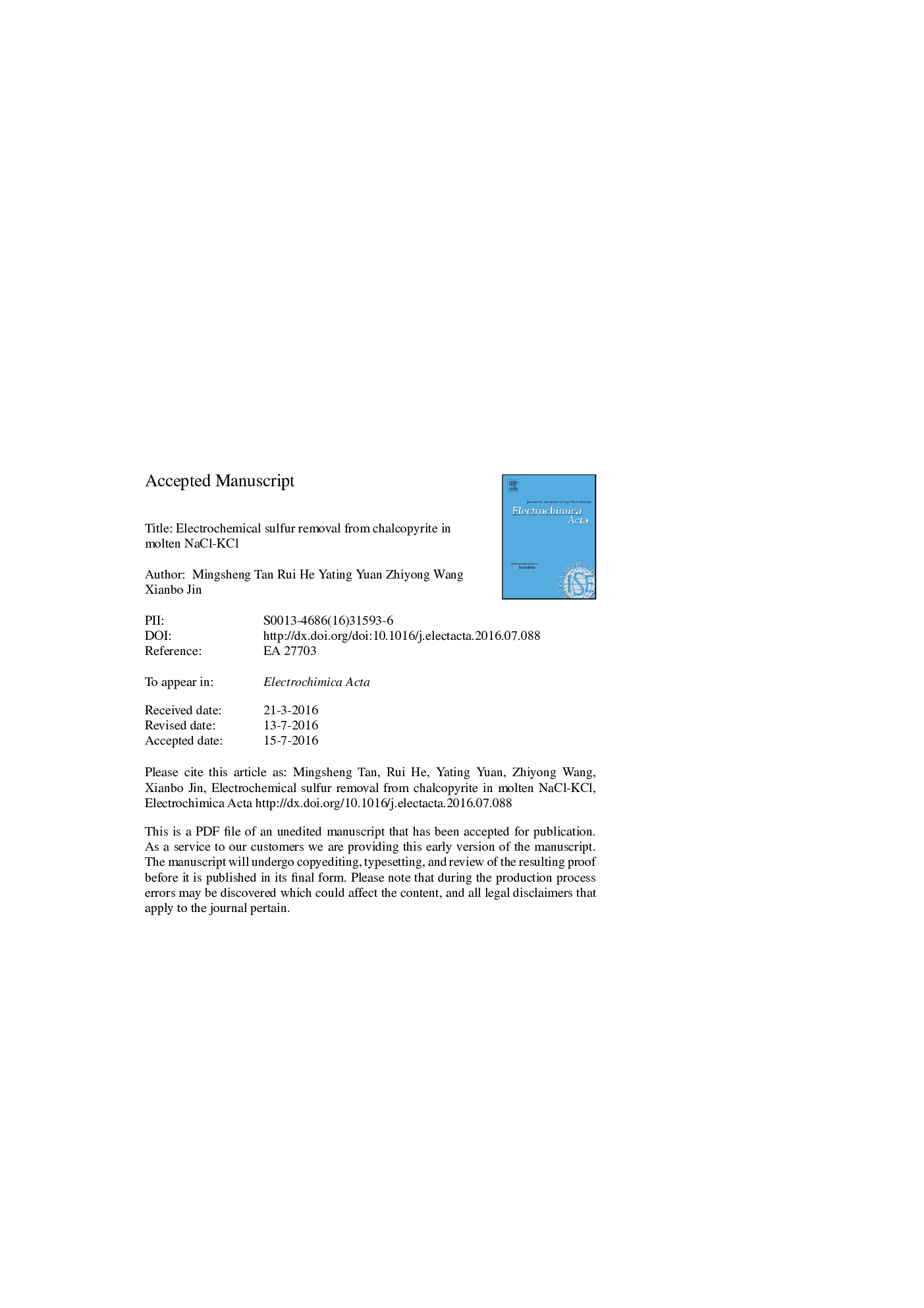| Article ID | Journal | Published Year | Pages | File Type |
|---|---|---|---|---|
| 6605560 | Electrochimica Acta | 2016 | 32 Pages |
Abstract
Electrolysis of solid chalcopyrite (CuFeS2) against a graphite inert anode has been studied in equimolar NaCl-KCl melt at 700 °C. During electrolysis, S2â ions are released from the solid CuFeS2 cathode, transfer to the graphite anode and discharge to S2 gas. The reduction mechanism of CuFeS2 was investigated by cyclic voltammetry, potentiostatic and constant voltage electrolysis together with spectroscopic and scanning electron microscopic analyses. The reduction contains mainly three stages: the insertion of Na+ or K+ into CuFeS2, forming LxCuFeS2 (L = Na or K, x â¤Â 1); the partial reduction of LxCuFeS2 to Lx-wCuFe1-yS2-z and Fe; the complete reduction to a mixture of Cu and Fe, which can be magnetically separated. After the separation, pure Cu can be obtained by leaching out the residual Fe with acid. Electrolysis at a cell voltage of 2.4 V has led to a rapid reduction of CuFeS2. The current efficiency and energy consumption were 85% and 1.68 kWh/kg-CuFeS2, respectively.
Keywords
Related Topics
Physical Sciences and Engineering
Chemical Engineering
Chemical Engineering (General)
Authors
Mingsheng Tan, Rui He, Yating Yuan, Zhiyong Wang, Xianbo Jin,
